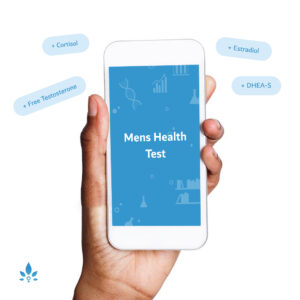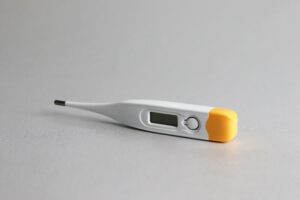Environmental Factors That Contribute to Male Infertility


Despite being significantly under-explored, male factors contribute to up to half of all cases of infertility. With genetics, abnormal sperm production, hormonal issues, structural abnormalities and environmental factors all thought to be causative; there is a need for thorough, comprehensive investigations whenever a problem is suspected.
The first step for most infertile couples is for both parties to undergo a detailed history and medical examination. This will enable the doctor to identify any potential confounders. As with most medical situations, the lifestyle choices that a person makes, along with the environment they live in, can have a significant impact on their health and well being. This article has been written to explore the specific environmental factors that are thought to impact male fertility.
Smoking
Whilst the dangers of smoking are well publicised, many people still do it and the highest prevalence is thought to be amongst men of reproductive age. Most studies have found that smoking has a moderate effect on semen quality, reducing sperm volume, count and motility. However, the association between male smoking and live birth rates remains unclear.
Up to 40% of infertility cases are considered to be idiopathic, meaning the cause is unknown. Men who fall into this category usually have normal looking sperm. One explanation for the unexplained infertility is damage to the sperm DNA. The extent of DNA fragmentation seems to be a robust indicator of male infertility; however, it remains, to date, an understudied area of investigation. A DNA fragmentation index (DFI) of greater than 30% is associated with increased infertility. In one study the DFI of infertile smokers was 38%, compared to 19% in infertile non-smokers and 15% in fertile controls. This suggests a strong link between smoking and DNA damage, which is independent of the infertility caused by other factors.
Additional support for this theory comes from understanding the harmful components that make up cigarettes. For example, tobacco which contains reactive oxygen species (ROS) and nicotine which causes double-stranded DNA breaks. ROS are a natural byproduct of cellular metabolism; however, levels can increase when the cells of the body are exposed to stress, nutrient deficiency, metal toxicity or irradiation. Chemicals, including tobacco also cause a dangerous accumulation of ROS, significantly increasing the risk of cellular damage and injury. Double-strand DNA breaks occur when both strands of the DNA double helix are severed. They can cause irreversible damage to the cell and genomic mutations. Smoking also reduces the levels of antioxidants, which play a vital role in neutralising the effects of harmful free radicals. An excess of free radicals can cause oxidative stress and will compromise normal cellular processes.
Smoking has an adverse effect on general health and men who are attempting to conceive should definitely take steps to try to quit.
Obesity
It is difficult to state conclusively that a high BMI impairs fertility, as the studies to date have been slightly conflicting. Certainly, some suggest a link between obesity and reduced semen quality, reduced sperm concentration and reduced motility. One study found that men with reduced semen quality were three times more likely to be obese. However, other larger, meta-analyses have concluded that there is only a minimal correlation between BMI and semen parameters and even though obese men have significantly less circulating testosterone, this does not seem to have any physiological effects. Despite these findings, moderate exercise and weight loss have been associated with improved semen parameters.
Obesity is also thought to cause a lower ejaculate volume and increase a male’s risk of experiencing erectile dysfunction.
As with smoking, obesity correlates with a high DFI; those men with a higher BMI are more susceptible to damaged DNA.
Whilst the evidence is growing with regards to obesity having a negative effect on reproductive capability, it remains irrefutable that overall health will be improved by the maintenance of a healthy BMI.
Heat
Experimental animal models have suggested an adverse link between scrotal temperature and impaired spermatogenesis; however, in reality the data is limited and insufficient to form a definitive conclusion. One study did identify a lower average sperm concentration in men who had a higher scrotal temperature, however, the actual value still fell within the WHO’s normal range. There is limited evidence that testicular cooling might improve semen quality.
It has been proposed that tight underwear, hot baths and a sedentary position can all contribute to increased scrotal temperature and fertility issues, but none of these associations have been substantiated.
Men who have abnormal sperm due to varicoceles typically have a higher scrotal temperature; however, this is likely to be a secondary effect, rather than a causative factor.
Endocrine Disruptors
Found abundantly, endocrine disruptors mimic natural hormones and have been shown to have a detrimental effect on both male and female fertility. Some of the most widely studied examples are bisphenol A (BPA) and phthalates, which are both used in the manufacture of plastics. BPA is antiandrogenic and has been linked to erectile dysfunction, whilst phthalates cause reproductive malformations and decreased sperm production.
Unfortunately, despite their detrimental effects, the widespread use of chemicals and products that contain endocrine disrupting agents, makes them very difficult to avoid.
Other Factors
Alcohol, psychological stress and caffeine are alternative factors that have been associated with impaired fertility. Whilst, the data on caffeine does not show a positive correlation; excessive alcohol consumption and increased stress both reduce semen quality. In a systematic review looking at socio-psycho-behavioural factors, alcohol correlated most strongly with a reduction in semen volume, and increased stress seemed to cause reduced sperm motility. Thus, men who are struggling to conceive might want to consider lowering their alcohol intake and attempting to avoid stressful situations, to maximise their chances of conception.
Nabta is reshaping women’s healthcare. We support women with their personal health journeys, from everyday wellbeing to the uniquely female experiences of fertility, pregnancy, and menopause.
Get in touch if you have any questions about this article or any aspect of women’s health. We’re here for you.
Sources:
- Barratt, C L R, et al. “The Diagnosis of Male Infertility: an Analysis of the Evidence to Support the Development of Global WHO Guidance—Challenges and Future Research Opportunities.” Human Reproduction Update, vol. 23, no. 6, 1 Nov. 2017, pp. 660–680., doi: 10.1093/humupd/dmx021.
- Chavarro, J E, et al. “Body Mass Index in Relation to Semen Quality, Sperm DNA Integrity and Serum Reproductive Hormone Levels among Men Attending an Infertility Clinic.” Fertility and Sterility, vol. 93, no. 7, 1 May 2010, pp. 2222–2231., doi:10.1016/j.fertnstert.2009.01.100.
- Elshal, M F, et al. “Sperm Head Defects and Disturbances in Spermatozoal Chromatin and DNA Integrities in Idiopathic Infertile Subjects: Association with Cigarette Smoking.” Clinical Biochemistry, vol. 42, no. 7-8, May 2009, pp. 589–594., doi:10.1016/j.clinbiochem.2008.11.012.
- Jung, A, and H C Schuppe. “Influence of Genital Heat Stress on Semen Quality in Humans.” Andrologia, vol. 39, no. 6, Dec. 2007, pp. 203–215., doi:10.1111/j.1439-0272.2007.00794.x.
- Li, Y, et al. “Association between Socio-Psycho-Behavioral Factors and Male Semen Quality: Systematic Review and Meta-Analyses.” Fertility and Sterility, vol. 95, no. 1, Jan. 2011, pp. 116–123., doi:10.1016/j.fertnstert.2010.06.031.
- Luccio-Camelo, D C, and G S Prins. “Disruption of Androgen Receptor Signaling in Males by Environmental Chemicals.” The Journal of Steroid Biochemistry and Molecular Biology, vol. 127, no. 1-2, Oct. 2011, pp. 74–82., doi:10.1016/j.jsbmb.2011.04.004.
- MacDonald, A A, et al. “The Impact of Body Mass Index on Semen Parameters and Reproductive Hormones in Human Males: a Systematic Review with Meta-Analysis.” Human Reproduction Update, vol. 16, no. 3, 2010, pp. 293–311., doi:10.1093/humupd/dmp047.
- Magnusdottir, E V, et al. “Persistent Organochlorines, Sedentary Occupation, Obesity and Human Male Subfertility.” Human Reproduction, vol. 20, no. 1, Jan. 2005, pp. 208–215., doi:10.1093/humrep/deh569.
- Sharma, R, et al. “Lifestyle Factors and Reproductive Health: Taking Control of Your Fertility.” Reproductive Biology and Endocrinology, vol. 11, no. 66, 16 July 2013, doi:10.1186/1477-7827-11-66.
- Wright, C, et al. “Sperm DNA Damage Caused by Oxidative Stress: Modifiable Clinical, Lifestyle and Nutritional Factors in Male Infertility.” Reproductive Biomedicine Online, vol. 28, no. 6, June 2014, pp. 684–703., doi:10.1016/j.rbmo.2014.02.004.













































